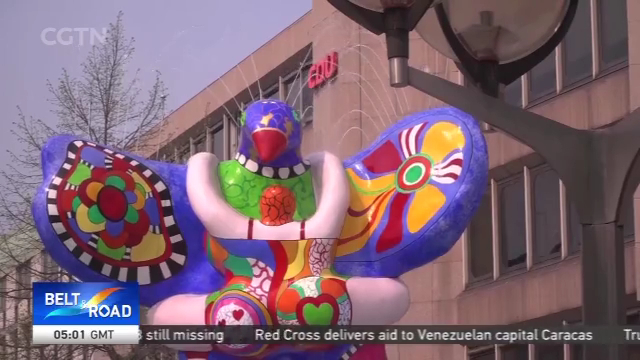
14:40, 17-Apr-2019
Wheels to Fortune: New Silk Road spurs Duisburg's economic revival
Updated
14:30, 20-Apr-2019
03:32

Germany's Western city of Duisburg has become the world's largest inland port, thanks to the development of rail connections with China, as part of Beijing's Belt and Road initiative. Duisburg was hit hard by de-industrialization but has since managed to transform itself as a logistics hub for central and eastern Europe. CGTN's Natalie Carney has more.
You can bet that Chinese clothes and toys, German car parts or French wines are in these large containers.
The Duisburg Intermodal Terminal, with the infrastructure and location near the Rhine and Ruhr rivers and many European highways makes it an idea connection to European consumers. And China recognises this.
LI ZHUO CONTARGO TRIMODAL NETWORK "On average it is 18 trains from China and 12 trains to China. After Chinese President Xi Jinping visited our terminal in the year 2014, the number of trains has been increasing rapidly."
This bilateral trade along the nostalgically named New Silk Road has spurred Duisburg's economic revival after the collapse of its iron, coal and steel industries.
NATALIE CARNEY DUISBURG, GERMANY "This was one of the city's thriving industrial parks, but it was abandoned in 1985, turning 'Duisburg' into a synonym for industrial decline and unemployment. However some of the infrastructure left behind has today helped transform Duisburg into the world's biggest inland port."
These train tracks which once supported Duisburg's bustling heavy industrial export industry are once again transporting trade.
And thats exactly why Dr. Wu moved to the city a year ago. His consultancy company has already helped twelve other Chinese businesses establish here.
WU YONG PARTNER, TROUVER CONSULTING "Most of the customers deal with import and export between Duisburg and China. That's why the railway is essential for our customers. Without this railway there won't be that many customers for us. That is certain."
New life is being given to the city. Planning is underway for a state of the art business district, new buildings are going up and new Chinese restaurants are opening.
Yet this 12,000 kilometre train route is still a work in progress. Trade needs to be more balanced says Kai Yu who works for the city of Duisburg.
YU KAI DUISBURG CITY ECONOMIC PROMOTION AGENCY "This train is more familiar for the Chinese side, Chinese investors so our job is also to make the European or German companies to know about this transport."
Ironing out customs regulations and infrastructure along the route will help cut down time and make European products more competitive in the Chinese market.
LI ZHUO CONTARGO TRIMODAL NETWORK "The biggest challenge is track gauge in those countries. For example in China and in Germany and Poland the gauge in narrow. And in Russia, Belarus and Kazakhstan the gauge is wide. Because of the different gauge size, each container has to be moved to another train twice."
Still the wheels are very much in motion and for this city, thats a great thing.
YU KAI DUISBURG CITY ECONOMIC PROMOTION AGENCY "The one belt one road initiative has made Duisburg to have a chance to let the whole world to rediscover the city."
Natalie Carney CGTN, Duisburg.

SITEMAP
Copyright © 2018 CGTN. Beijing ICP prepared NO.16065310-3
Copyright © 2018 CGTN. Beijing ICP prepared NO.16065310-3